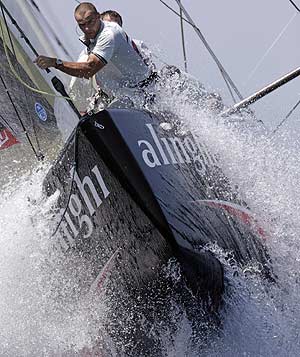
Salvador Dali is the world famous and greatest of surrealist painters. Smart, sharp and brilliant, he was the Artist of the artists. His moustache said a lot about him: Dali was a genius of originality and authenticity. He was highly imaginative, and had a great eagerness for having an unusual and grandiose behaviour, in order to draw attention to himself.
Dali was born in Figueres (Catalonia) in 1904. As an adult, he made his home with his wife and muse Gala in nearby Port Lligat, but he lived in Barcelona, Madrid, Paris and USA too. He was a very versatile artist, not limiting himself only to painting: he used to do sculptures, and he is also famous for his contributions to fashion, theatre and photography. His painting skills are often attributed to the influence of Renaissance masters.
In 1921 he moved to the student residences at the School of Fine Arts in Madrid (but he was expelled in 1926, due to his final exams, when he said that no one on the faculty was competent enough to examine him) and ten years later he was yet the genius that we all know: he had collaborated on a short film with Luis Buñuel; he had officially joined the surrealist group in Paris where he painted his most famous work, The Persistence of Memory, which almost stands alone as a symbol of the movement.
After some years he was expelled from the Surrealist movement because they considered he has become too commercial and that he just wanted to attract attention to himself. And maybe this is what he wanted, because he titled his autobiography Diary of a Genius. However, he continued exhibiting his surrealist works all over the world.
In 1940 Dali shifted to a new type of painting which was more concentrated on science, religion and even history. He and Gala escaped from World War II to the United States (1940-1948) and he acquainted himself with his classic period: he painted a series of 19 large canvases, among the best known are The Hallucinogenic Toreador, and The Discovery of America by Christopher Columbus and The Sacrament of the Last Supper. These were very important years for the artist.
In 1949, Dalí wnt back to his beloved Catalonia, where he spent his remaining years. In 1974, he opened his famous Teatro Museo in Figueres. Late in his career, he moved around other areas in addition to painting: he experimented with many unusual or novel ideas. For example, he designed the Chupa Chups logo and even created the advertising for the 1969 Eurovision Song Contest.
Gala died on June 10, 1982. After Gala's death, Dali's health began to fail. He moved from Figueres to the castle in Púbol, which he had bought for Gala and was the site of her death. In November 1988, he was admitted to hospital with heart failure, and he died on January 23rd, 1989 from a second heart failure.
This excellent and creative artist will always be an art standard. He is unique, he is a genius, he is Salvador Dali! If you want to learn more about him travel to Catalonia and rent Apartments in Barcelona. It will be an exciting experience!








